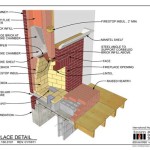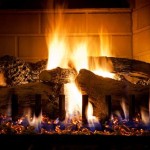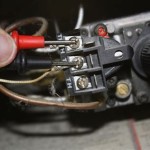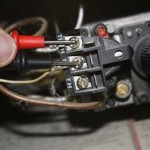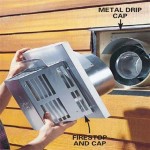How To Make A Fireplace Mantel
A fireplace mantel serves as a focal point within a room, adding architectural interest and providing a surface for displaying decorative items. Constructing a fireplace mantel can be a rewarding do-it-yourself project, allowing for customization to match specific aesthetic preferences and room dimensions. This article provides a comprehensive guide to building a fireplace mantel, covering planning, material selection, construction techniques, and installation procedures.
### Planning and Design ConsiderationsPrior to commencing any construction, meticulous planning is essential. The planning phase involves determining the desired mantel style, taking accurate measurements, and selecting appropriate materials. The style of the mantel should complement the existing décor of the room. Common styles include traditional, contemporary, rustic, and minimalist. Researching various mantel designs online or in home improvement publications can provide inspiration.
Accurate measurements are critical for a successful project. Measure the width and height of the fireplace opening. Determine the desired height of the mantel. A general guideline is to position the mantel at least 12 inches above the fireplace opening. Check local building codes for specific requirements regarding clearances between the mantel and the fireplace opening. Document all measurements in a detailed sketch. This sketch will serve as a blueprint for the construction process.
Material selection significantly impacts the overall appearance and durability of the mantel. Wood is a popular choice due to its versatility and aesthetic appeal. Consider the type of wood species, such as pine, oak, or maple, based on budget and desired grain pattern. Alternative materials include stone, brick, or concrete, which offer a more substantial and modern look. Consider the weight of the chosen material, ensuring the support structure can handle the load. Obtain all materials from a reputable supplier, ensuring quality and consistency.
Safety considerations are paramount when planning a fireplace mantel. Ensure the mantel is constructed from non-combustible materials or is adequately shielded from the heat source. Consult local building codes and regulations regarding fireplace mantel construction and installation. Obtain necessary permits before beginning the project. Wear appropriate safety gear, including eye protection, gloves, and a dust mask, during all phases of construction.
Determine the type of construction method. One common method involves building a hollow box-like structure that is then mounted to the wall. This method is relatively lightweight and easier to install. Another method involves using solid wood beams or planks, which provide a more substantial and rustic appearance. The choice of construction method depends on the desired aesthetic and the load-bearing capacity of the wall.
### Construction Techniques and ProceduresOnce the planning phase is complete, the construction process can begin. This involves cutting the materials to the specified dimensions, assembling the mantel components, and applying necessary finishes.
Using the detailed sketch and measurements, cut the chosen materials to the required sizes. Utilize a power saw, such as a circular saw or miter saw, for accurate and efficient cutting. Ensure all cuts are clean and square. Sand the edges of the cut pieces to remove any splinters or rough spots. Precision at this stage directly affects the final appearance and structural integrity of the mantel.
Assemble the mantel components using appropriate fasteners, such as screws, nails, or construction adhesive. If building a hollow box-like structure, construct the frame using wood studs or plywood. Ensure the frame is square and level. Attach the facing material, such as wood planks or stone veneer, to the frame using construction adhesive and fasteners. If using solid wood beams, join the beams together using mortise and tenon joints or other suitable joinery techniques. Reinforce the joints with screws or dowels for added strength.
After assembly, apply the desired finish to the mantel. This may involve staining, painting, or sealing the material. Prepare the surface by sanding it smooth and removing any dust or debris. Apply the finish in thin, even coats, allowing each coat to dry completely before applying the next. Follow the manufacturer's instructions for the chosen finish. The finish protects the material from moisture and enhances its aesthetic appeal.
Consider adding decorative elements to the mantel to enhance its visual appeal. This may include adding molding, corbels, or other decorative trim. Attach the decorative elements using construction adhesive and fasteners. Ensure the decorative elements are securely attached and are aligned properly. These elements contribute to the overall style and character of the fireplace mantel.
For stone or brick mantels, the construction process involves adhering the stones or bricks to a supporting structure. This typically involves using a mortar mix designed for masonry applications. Apply the mortar to the back of each stone or brick and press it firmly against the supporting structure. Ensure the stones or bricks are level and aligned properly. Allow the mortar to cure completely before applying any additional finishes. This process requires specialized tools and techniques, and it is recommended to consult with a professional if inexperienced.
### Installation and Mounting ProceduresThe final step involves installing the constructed mantel onto the wall above the fireplace opening. This requires careful planning and precise execution to ensure the mantel is securely mounted and properly aligned.
Locate the wall studs behind the finished wall using a stud finder. The mantel should be securely attached to the wall studs for maximum support. Mark the location of the studs on the wall. Determine the desired height of the mantel and mark the location of the mounting brackets or support cleats. Ensure the mantel is level before proceeding with the installation.
Attach the mounting brackets or support cleats to the wall studs using screws or lag bolts. Ensure the brackets or cleats are securely fastened and are capable of supporting the weight of the mantel. Use a level to ensure the brackets or cleats are aligned properly. Poorly installed brackets can lead to an unstable and potentially dangerous installation.
Carefully lift the mantel into position and slide it onto the mounting brackets or support cleats. Ensure the mantel is fully seated and is securely supported. If necessary, use shims to level the mantel and eliminate any gaps between the mantel and the wall. Secure the mantel to the brackets or cleats using screws or construction adhesive. Recessed screws can be used and then concealed with wood filler for a seamless look.
Conceal any gaps or imperfections between the mantel and the wall using caulk or wood filler. Apply the caulk or wood filler smoothly and evenly. Allow the caulk or wood filler to dry completely before sanding it smooth. Paint or stain the caulk or wood filler to match the finish of the mantel. This step enhances the overall appearance of the installation and provides a professional finish.
Consider adding a fire-resistant barrier between the mantel and the fireplace opening if required by local building codes. This barrier protects the mantel from excessive heat and prevents the risk of fire. The barrier can be constructed from non-combustible materials such as metal or cement board. Install the barrier according to the manufacturer's instructions. Safety should be the primary concern throughout the entire installation process.
After installation, inspect the mantel to ensure it is securely mounted and properly aligned. Verify that the mantel is level and that there are no gaps or imperfections. Test the stability of the mantel by applying gentle pressure. If any issues are identified, address them immediately to ensure the long-term safety and stability of the installation.
Thorough cleaning of the surrounding area is recommended after installation. Remove any debris or construction materials. Dispose of waste materials properly. Wipe down the mantel with a damp cloth to remove any dust or fingerprints. This ensures the finished product is clean and visually appealing.

How To Make An Easy Diy Fireplace Mantel Sprucing Up Mamahood

Diy Fireplace Mantel Designatedspacedesign Com

Easy Diy Fireplace Mantel Tutorial Jessica Welling Interiors

Build A Fireplace Mantel

How To Build A Fireplace Mantel Easy Diy Blossoming Life

Diy Fireplace Mantel The Idea Room

Easy Fireplace Mantel Diy

Diy Faux Fireplace Mantel Rebecca Propes Design

19 Amazing Diy Fireplace Mantel Ideas To Inspire You

Diy Wood Beam Mantel
Related Posts



